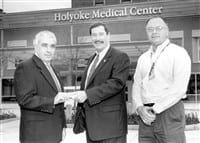Life’s Work – Occupational Therapy Month Showcases a Bright Career Path
Occupational Therapy Month began in 1980, celebrated each April to correspond with the annual conference of the American Occupation Therapy Assoc.
Young or old, we all have a job to do — the job of living. Learning, growing, playing, working, managing our homes, and caring for our families are among the ‘occupations’ of life. Unfortunately, physical, emotional, or other challenges often prevent people from fully participating in the job of living. Disease, injury, depression, or developmental problems can make it difficult for people to do everyday tasks or be active and independent.
Occupational therapy — a vibrant, growing profession — makes it possible for people to achieve independence and to enjoy life to its fullest. Those who choose a career in occupational therapy will make a difference, and be able to improve the lives of people ranging from newborns to the very old. Students today can look forward to dynamic careers working in multiple settings with people of all ages.
Furthermore, the employment outlook for occupational therapists is bright. Recent information published by the U.S. Department of Labor, Bureau of Labor Statistics has projected that the job outlook for occupational therapists will improve substantially in the next several years and will continue to do so for the foreseeable future. Specifically, it states that “employment of occupational therapists is expected to increase much faster than the average for all occupations through 2014,” meaning that employment is expected to increase by 27{06cf2b9696b159f874511d23dbc893eb1ac83014175ed30550cfff22781411e5} or more. The outlook for occupational-therapy assistants is equally bright, the bureau predicts.
One of the greatest advantages of a career in occupational therapy is the wide variety of opportunities available to occupational-therapy graduates. Many practitioners choose to help children thrive in the ‘occupations’ of childhood, which include learning, playing, and growing. Therapists work in schools with students who have learning disabilities or behavioral problems. Others work with premature newborns at pediatric hospitals or children with cerebral palsy, Down syndrome, and other disabilities.
Occupational therapists also work with individuals in their homes, community centers, rehabilitation hospitals, businesses, and nursing homes. In these settings, occupational therapists help people with traumatic injuries, stroke, Alzheimer’s disease, or mental-health problems learn to live productive lives through the use of meaningful occupations.
Those who join the field today may choose other areas of practice that are increasingly important. These new specialties include training workers to use proper ergonomics on the job, helping people with low vision maintain their independence, making buildings and homes more accessible, older driver evaluation and training, and promoting health and wellness.
Occupational therapy is a career for individuals who care about people and have a desire to learn, achieve, and contribute their best to society and the profession.




Comments are closed.